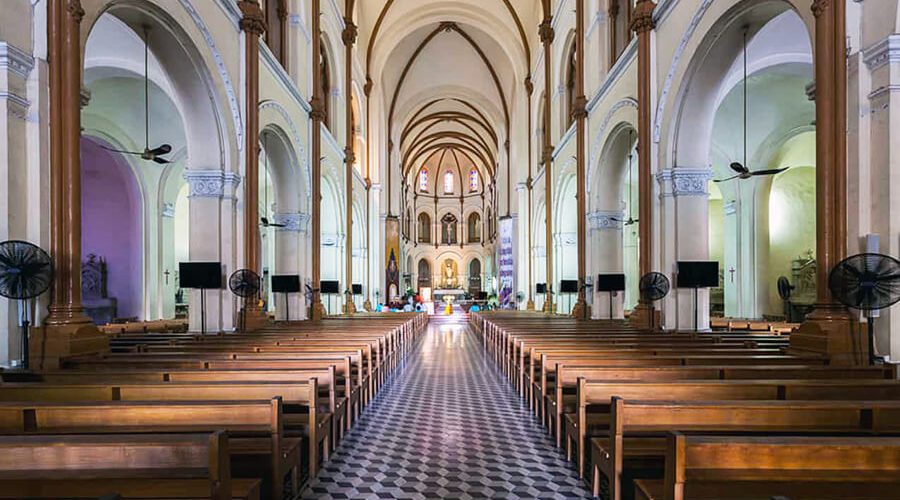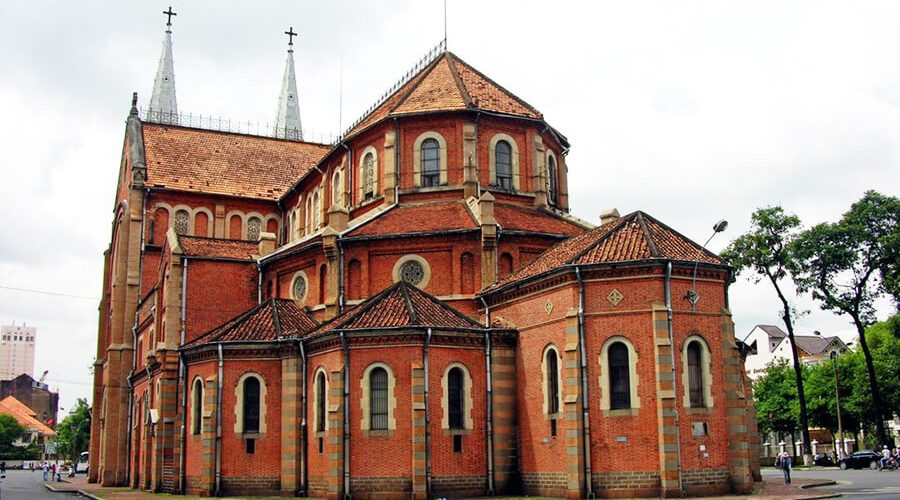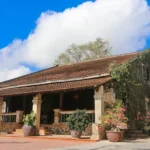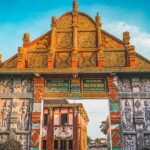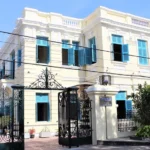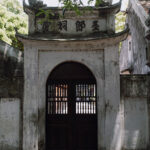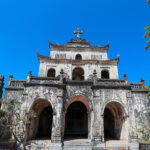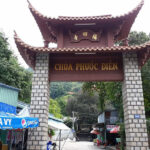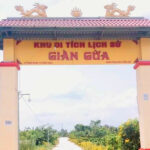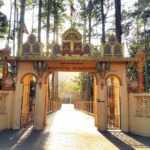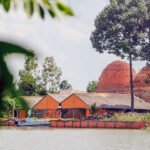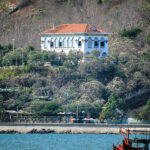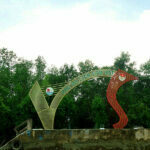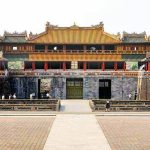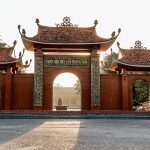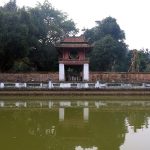Notre Dame Cathedral Basilica of Saigon (Vietnamese: Vương cung thánh đường Chính tòa Đức Bà Sài Gòn or Nhà thờ Đức Bà Sài Gòn) is one of the unique architectural works in Ho Chi Minh, an attractive destination for both domestic and foreign tourists. This is one of the few remaining strongholds of Catholicism in Vietnam.
History of the Notre Dame Cathedral Basilica
Notre Dame Cathedral Basilica of Saigon was constructed between 1863 and 1880 by French colonists. The first wooden church was built in March 1863 and completed two years later. It was called “Saigon Church”. However, this church was damaged by termites later. The new construction began in 1877 and lasted for three years under the supervision of J. Bourad, who was the designer of this building. The inauguration mass and a blessing ceremony of the cathedral took place on April 11, 1880.
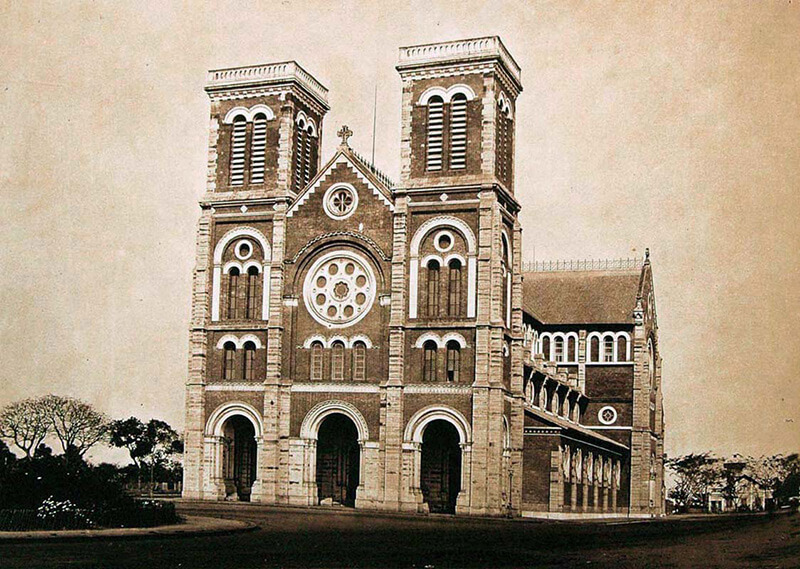
In 1895, the French built two more bell towers. Around the tower, there are six small bronze bells. At the top of each tower was a cross that is 3.5m high, 2m wide, and weighs 600kg. At that time, the building’s height from the ground to the highest point was 60.5m.

The French also cast a bronze statue of Pigneau de Behaine (also known as Bishop Adran) holding the hand of Prince Canh, the eldest son of Emperor Gia Long. This statue is located in front of the church. In 1945, the statue was destroyed, but its base remains.

The name Notre-Dame Cathedral has been used since 1959, after a granite statue of Our Lady of Peace from Rome arrived and was installed here. On 5 December 1959, the Vatican conferred Cathedral status as a basilica. Since then, this cathedral has been officially named Saigon Notre-Dame Cathedral Basilica.

Today, Notre Dame Cathedral Basilica of Saigon is the largest Catholic center in Saigon and a famous tourist destination, attracting large numbers of domestic and international visitors.
Special characteristics of Notre Dame Cathedral Basilica of Saigon
After more than a century of construction, this church still retains its ancient features and adds a different beauty to the lavish, bustling city of Saigon. That’s why this place is always a top destination for tourists visiting Ho Chi Minh City.
About materials and architecture
Saigon Notre Dame Cathedral was built in the neo-Romanesque Revival (or Neo-Romanesque) architectural style. This was a building style popular around the mid-19th century, inspired by the Romanesque architecture of the 11th and 12th centuries. Buildings in this style tend to feature arches and simple window design.

Romanesque Revival neo-Roman architecture at the church
During the construction of Saigon Notre Dame Cathedral, all materials, from cement to steel to screws, were brought from France. The building’s exterior was made of bricks produced in Marseille.

The advantage of this type of brick was only bare, not plastered, not mossy. And until now, it still retains its bright pink color after decades. The entire cathedral has 56 stained glass windows produced in Chartres province (France).
About the design of Saigon Notre Dame Cathedral
The foundation of the cathedral is specifically designed to bear 10 times the weight of the entire structure. And a very special thing: the church does not have fences or walls, unlike the churches around Saigon at that time.

The interior of the cathedral has two main rectangular rows, with six rows on each side representing the 12 apostles. The altar of Saigon Notre Dame Cathedral was made of monolithic marble with six angels carved into the stone.

The altar pedestal is divided into 3 parts, this is a beautiful fine art sculpture depicting events in the Bible
The altar pedestal is divided into three parts. This is a lovely, fine-art sculpture depicting events from the Bible.

The walls are decorated with 56 glass windows depicting biblical characters or events, 31 round rose figures, and 25 multicolored bullseye windows combined with beautiful images. All lines, edges, and patterns follow solemn and elegant Roman and Gothic forms.

However, out of these 56 glass doors, only 4 are still intact. The other glass doors were repaired in 1949 because they had been destroyed during the war.
Church bell tower
The original design had two bell towers that were 36.6m high, had no roof, and only had a narrow staircase of about 40cm. The interior is dark, and the floor is lined with small wooden pieces. In 1895, the church built two more roofs to cover the 21m high bell tower designed by architect Gardes, for a total of a 57m high bell tower. All six bells are hung on two bell towers. This bell was made in France and brought to Saigon in 1879.

The bell is controlled electronically from below. On weekdays, Saigon Notre Dame Cathedral only rings at 5:00 a.m. and 16:15 p.m. On holidays and Sundays, the church often rings three bells. 6 bells ringing at the same time will have a very loud sound; you can even hear the bells from 10km away.
Between the two bell towers is a very large clock. It was produced in 1887 and weighs 1 ton. Even though it is more than a hundred years old, the clock still operates very accurately.

Small square in front of the church
Paris Commune Square is located between Notre Dame Cathedral and Nguyen Du Street. In the center of the square, the statue of Our Lady of Peace stands. This is where visitors often stop to drink coffee, take photos, and watch pigeons. Especially on weekend mornings, many young people gather here to chat and have fun together.

The image of Notre Dame Cathedral Basilica has long become a representative part of the magnificent land of Saigon. Near the church, there is also the Independence Palace and the city’s Post Office. You can combine visiting these three famous destinations to explore Ho Chi Minh to the fullest.
Helpful information about Notre Dame Cathedral Basilica of Saigon
- Location: 1 Cong Xa Paris, Sai Gon Ward, Ho Chi Minh City.
- Best for: Family, couple, solo
- Entrance: Free
- Opening Hours: Daily 08:00 – 17:00
- Other tourist spots nearby: Independence Palace, War Remnants Museum, Bến Thành Market, Landmark 81, Bitexco Financial Tower, Ho Chi Minh City Post Office…
Source: collected by An
Follow us for the best deals on Vietnam package tours and visa services!












